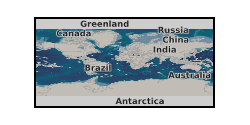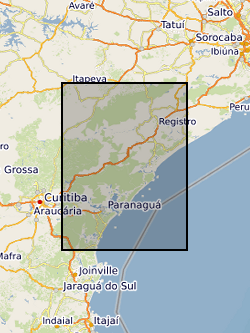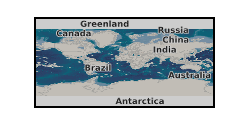Apatite
Type of resources
Available actions
Topics
Keywords
Contact for the resource
Provided by
Years
Formats
Representation types
Update frequencies
-

Dihedral angle data and bulk rock P2O5 concentrations for cumulates from the Skaergaard Intrusion of East Greenland. The data were used to constrain the thickness of the mushy layer at the point in the stratigraphic where apatite arrives as a liquidus phase. The work was published: Holness et al. (2017) Journal of Petrology, doi: 10.1093/petrology/egx040
-

Trace element geochemistry, using Electron Microprobe Analyses, of rutile and apatite from the Zambian Copperbelt, includes standards, and accuracy and precision. Apatite grains from Arkose , Kitwe and Mindola Clastics Formations, Nchanga were analysed using a JEOL JXA-8530F Plus hyperprobe electron microprobe at the NHM, London. Spot locations were chosen away from any pits or inclusions. Most apatite crystals received two spots; one located close to the core and one close to the rim in order to assess compositional zoning and intra-grain heterogeneity. The elements P, Ca, F, Cl, Na, S, Sr, Fe, La, Ce, Mn, Si, Mg and Ti were measured. F, Sr, Cl, P and Ca were measured first in analytical sequence as suggested by Goldoff et al., (2012) to minimise time-dependent x-ray count variations. For rutile, 14 elements were measured across the 5 WDS detectors under the same operating conditions as for apatite. These elements were Si, Al, Mg, Ca, Ti, Nb, Zr, Cr, V, Fe, W, Sn, Ta and Mn.Three samples, of Arkose, from the Kitwe Formation, Nchanga, Zambia (NOP741-16p, NOP741-17p 282 Appendix B and NOP741-19p) were analysed. Where possible, spots were chosen on the same rutile grains as laser ablation and away from any debris. For geological setting of individual samples see Appendix A ; Kelly, Jamie (2024) Thesis "Constraining Cu-(Co) mineralisation in sediment-hosted copper deposits using rutile, apatite, and carbonate geochronology". University of Southampton doi:10.5258/SOTON/D3219 [Dataset]
-

Zeta potential measurements of rare earth element enriched apatite from Jacupiranga, Brazil under water and collector conditions. Zeta potential measurements can be used to indicate the surface behaviour of a mineral under different reagent conditions. Mineral surface behaviour is important in processing and extracting minerals from their host ore, which can be energy intensive. Apatite is a phosphate mineral which can become enriched with rare earth elements. Rare earth elements are important in a wide range of products from iPhones to wind turbines.
-

TIMA images of samples from Mindola North, and Nchanga. TIMA images at Nchanga include Mindola Clastics and Upper and Lower orebodies. Identified minerals include quartz, microcline, phlogopite, muscovite, dolomite, chlorite, albite, calcite, chalcopyrite, carrollite, bornite, Co-pyrite, chalcocite, malachite and heterogenite. TIMA images from Mindola show dolomitic siltstones and impure dolostones. Chapters 4 and 5. Kelly, Jamie (2024) Dataset for thesis "Constraining Cu-(Co) mineralisation in sediment-hosted copper deposits using rutile, apatite, and carbonate geochronology". University of Southampton doi:10.5258/SOTON/D3219 [Dataset]
-

U-Pb isotope ratio data set for numerous phosphate (apatite) grains in two thin section samples of the LL5 S4-6 Chelyabinsk meteorite. One section is of the S4-6 light lithology, and another of the S5-6 dark lithology. Samples analysed were section ‘A' (light lithology) and section ‘B’ (dark lithology) of Chelyabinsk, both from the Open University School of Physical Sciences sample collection. The results demonstrate variability in degree of Pb-loss during collisional reheating from pristine versus damaged apatite crystal domains. These results are reported for a meteorite fall which originally happened near Chelyabinsk in Russia. The results otherwise have no geographic location, as this is a sample of an asteroid. All measurements were made in December 2020. These data were collected using Secondary Ionisation Mass Spectrometry (SIMS) with a CAMECA IMS 1280 at the Institute of Geology and Geophysics, Chinese Academy of Sciences (IGGCAS). The thin sections were polished with colloidal silica, cleaned, and coated with gold prior to analysis. Microtextural information was obtained prior to analysis using a combination of back-scatter-electron, cathodoluminescence, and electron-back-scatter-diffraction analysis. Data were obtained to test hypotheses relating to the competition between macro-to-meso-scale thermally-driven variation in Pb-loss rates versus microscale variation driven by grain-specific features, e.g., fracture networks. An article describing and discussing these results, including further methodological steps in their collection and processing, is due for publication. This information is currently available in preprint form on arXiv: https://arxiv.org/abs/2112.06038
-

Apatite Fission Track (AFT) single grain count and horizontal confined track length data acquired from 6 sandstones samples from UKGEOS Glasgow borehole GGC01 drilled in the Dalmarnock area of Glasgow. The sandstones were retrieved from depths of 65, 98, 135, 150, 168 and 198 metres and were Westphalian in age coming from the Middle and Lower Scottish coal measures. Each sample has its BGS Subsample SSK number and an ascribed name in reference to its depth of collection with the added initials of the researcher i.e., 65 AH. The data is presented in 2 files one containing the AFT count data and the other containing the AFT length measurements. The AFT count data of each sample is found in excel file containing the spontaneous and induced track counts of a grain and accessory data of that grain e.g., the calculated age (calculated using the program Isoplotr) and calculated uranium concentration. The AFT length data of each sample comes in a separate excel file with the measured lengths and c-axis corrected lengths of HCTs of a sample, all Dpar measurements are also listed here. Samples and data are derived from the UK Geoenergy Observatories Programme funded by the UKRI Natural Environment Research Council and delivered by the British Geological Survey.
 NERC Data Catalogue Service
NERC Data Catalogue Service